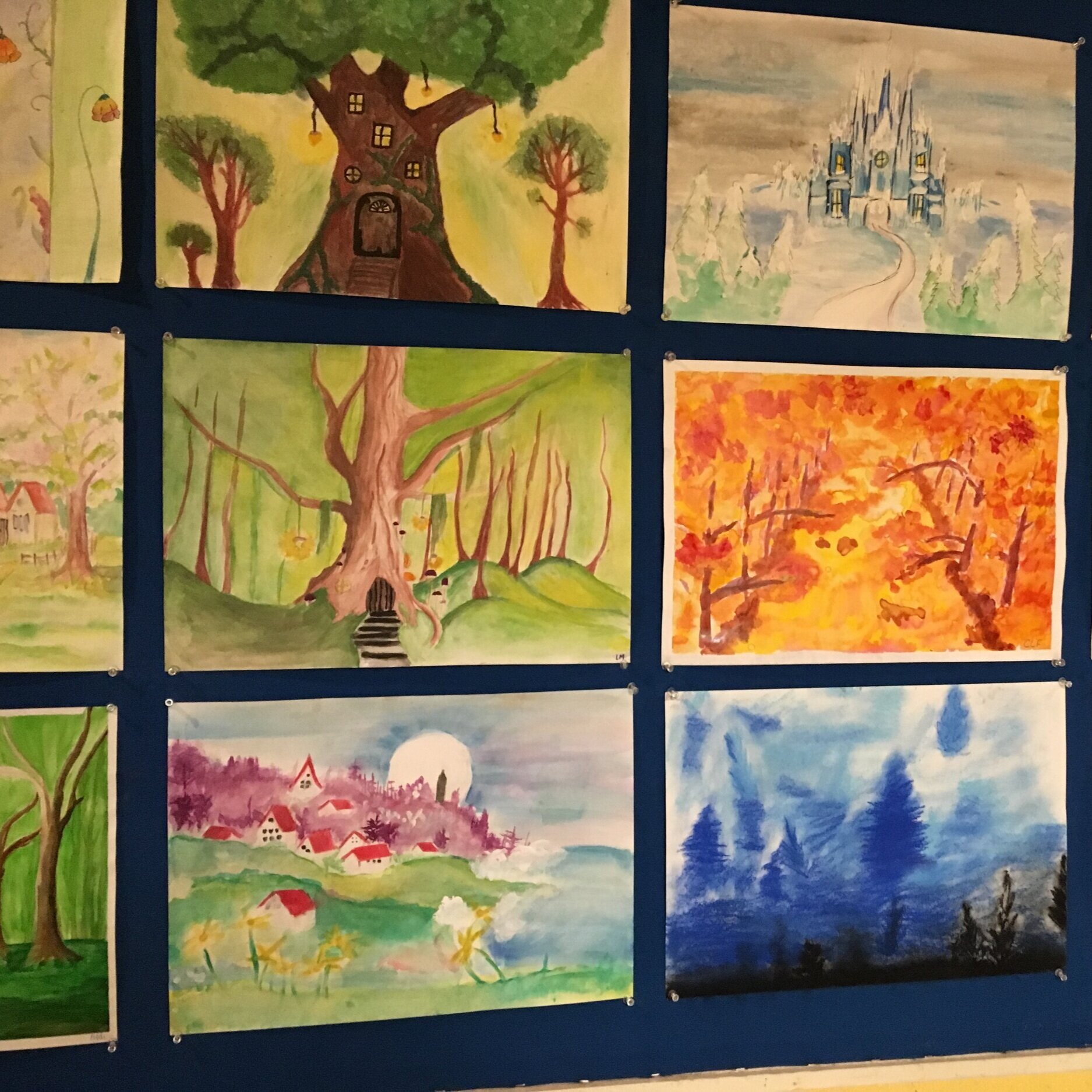We’ve reached the letter ‘P’ in our 26-part series on what makes a Madrona School education unique, and P is for painting. Art infuses our curriculum, and a basic tenet of Waldorf education confirms artistic expression as elemental to our humanity. Every one of us is an artist, a creative being. In addition to drawing in main lesson and other specialty periods at Madrona, we include watercolor painting as a weekly activity in our early childhood classes, as well as a specialty class throughout the grade school. Our students learn techniques around wet-on-wet painting, applying watercolors to wet paper. This technique demonstrates the fluidity of color and requires time to learn, so the children build on what they know as they move through the grades. And, as with much of our curriculum, the full flowering of painting technique reveals itself in the middle school years. In kindergarten and 1st grade, students learn to work with color, experiencing colors both separately and blended, and they also begin to acquire brush control. As they develop skills, paintings reflect current main lesson blocks, and augment main lesson drawings and essays, becoming more detailed and skilled as they master techniques. We invite you to walk through the school building every so often - the teachers hang art in the halls on a regular basis. It's inspiring!
— adapted from our school newsletter






























